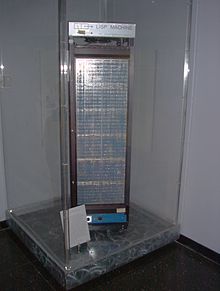
Back جهاز ليسب Arabic Lisp-Maschine German Máquina Lisp Spanish Lisp-kone Finnish Machine Lisp French LISPマシン Japanese 리스프 머신 Korean Lisp-machine Dutch Lisp-maskin NB Lisp-maszyna Polish

Lisp machines are general-purpose computers designed to efficiently run Lisp as their main software and programming language, usually via hardware support. They are an example of a high-level language computer architecture. In a sense, they were the first commercial single-user workstations. Despite being modest in number (perhaps 7,000 units total as of 1988[1]) Lisp machines commercially pioneered many now-commonplace technologies, including effective garbage collection, laser printing, windowing systems, computer mice, high-resolution bit-mapped raster graphics, computer graphic rendering, and networking innovations such as Chaosnet.[2] Several firms built and sold Lisp machines in the 1980s: Symbolics (3600, 3640, XL1200, MacIvory, and other models), Lisp Machines Incorporated (LMI Lambda), Texas Instruments (Explorer, MicroExplorer), and Xerox (Interlisp-D workstations). The operating systems were written in Lisp Machine Lisp, Interlisp (Xerox), and later partly in Common Lisp.

- ^ Newquist, H.P. (1 March 1994). The Brain Makers. Sams Publishing. ISBN 978-0672304125.
- ^ Target, Sinclair (30 September 2018). "A Short History of Chaosnet". Two-Bit History. Retrieved 6 December 2021.
© MMXXIII Rich X Search. We shall prevail. All rights reserved. Rich X Search